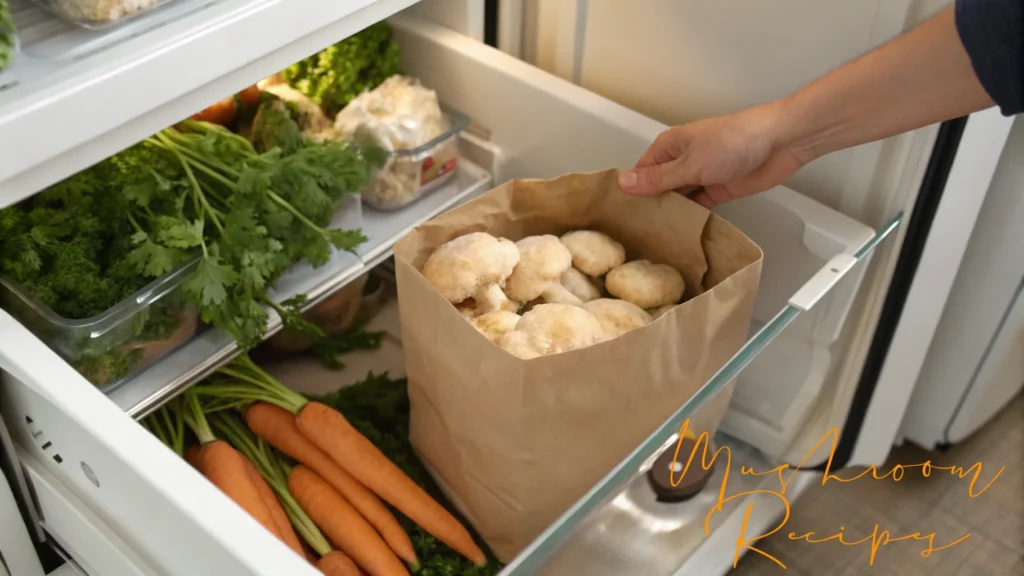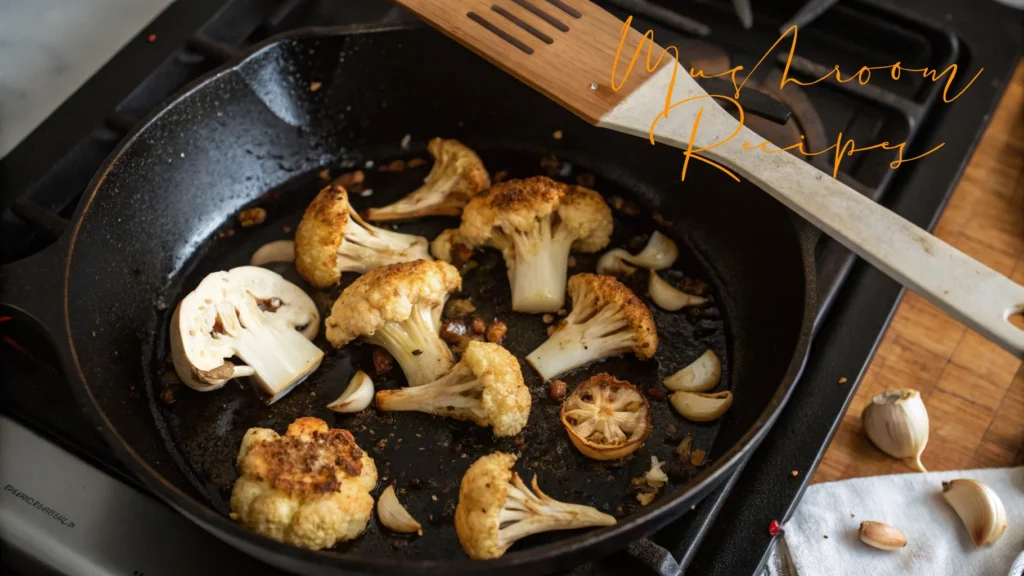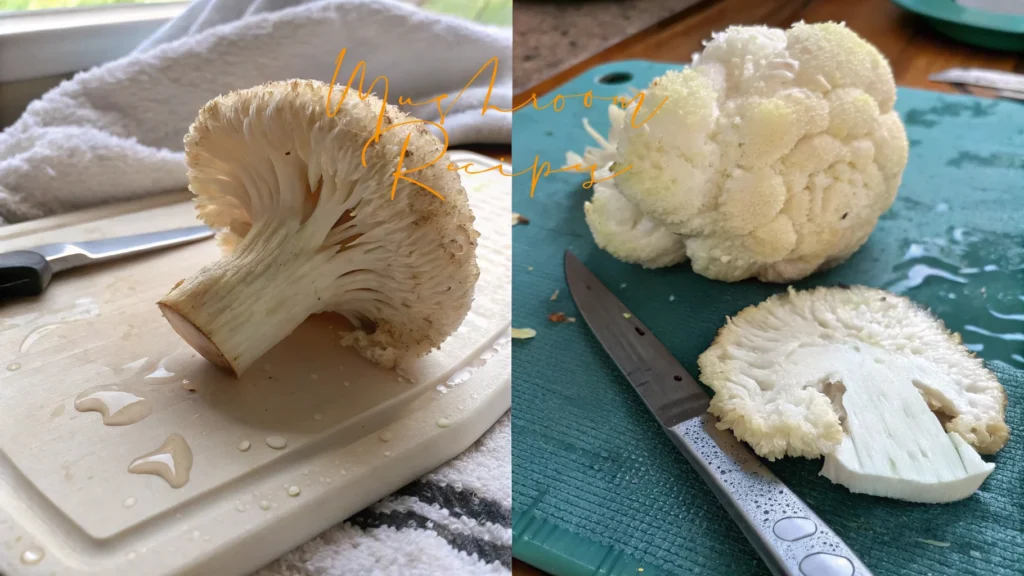Cooking Lion’s Mane Mushrooms
I’ll be honest the first time I saw a lion’s mane mushroom, I had no idea what to do with it. It looked like a pom-pom. Or a loofah. Definitely not something I’d toss in a stir-fry.
But after I finally worked up the courage to cook one? Total game changer.
Lion’s mane isn’t just another mushroom. It’s soft, delicate, and weirdly meaty. The texture is somewhere between crab and pulled chicken, and it takes on flavor like a sponge in the best possible way. You can grill it, air fry it, sauté it, or turn it into something that tastes shockingly close to seafood… all without trying too hard.
It’s also good for you. Like, really good. Packed with antioxidants, fiber, and compounds linked to brain and nerve health. (That’s where the whole “smart mushroom” nickname comes from.)
But even if you don’t care about that it’s just fun to cook with. A little sear, a little salt, and suddenly you’ve got something that feels gourmet but took 10 minutes.
Whether you’re a longtime vegan, a curious foodie, or just want something new to toss in a skillet, lion’s mane is absolutely worth your time.
What Does Lion’s Mane Taste Like?
The best way I can describe it? Lion’s mane tastes like seafood without being fishy.
It has a mild, slightly sweet flavor nothing overpowering which makes it the perfect base for bolder spices, marinades, and sauces. When cooked right, it develops a tender, almost stringy texture that pulls apart like crab meat or scallops. Seriously, I’ve fed it to people without telling them what it was, and they’ve guessed “lobster” more than once.
That’s why it works so well in things like vegan crab cakes, tacos, or even stir-fries. It’s neutral enough to go in any direction smoky, spicy, citrusy, garlicky but has just enough flavor to be satisfying on its own.
And if you’re into umami (that deep, savory “meaty” taste), lion’s mane brings it especially when seared or grilled. It’s not chewy like portobello. It’s not soft like button mushrooms. It’s got its own thing going on and once you try it, you’ll get what I mean.
Where to Buy and How to Store Lion’s Mane Mushrooms

Buying lion’s mane used to be tricky like, farmer’s-market-or-bust tricky. But these days? It’s a lot more accessible.
Here’s where I usually find it:
- Farmer’s Markets: This is still my favorite. The mushrooms are fresh, often locally grown, and the sellers usually have great tips.
- Health Food Stores: Places like Whole Foods, Sprouts, and natural co-ops are starting to carry lion’s mane more regularly.
- Asian or Specialty Grocers: Check the mushroom section you might get lucky.
- Online: Some small farms ship fresh lion’s mane directly to your door. If you want consistent access, this is worth exploring.
- Grow-at-Home Kits: Yes, you can grow your own! And honestly, it’s fun especially if you’re into DIY stuff.
How to Store It So It Stays Fresh
Lion’s mane is delicate. It bruises easily and holds moisture, which means it can go bad quickly if you don’t store it right.
Here’s what I do:
- Refrigerate in a paper bag not plastic. You want it to breathe.
- Keep it in the veggie drawer, where the humidity is controlled.
- Don’t wash it until you’re ready to use it.
- Try to use it within 3–5 days for the best texture and flavor.
Bonus tip: If you somehow end up with too much, lion’s mane can be sliced and dried in a dehydrator or a low oven. It rehydrates pretty well in soups and broths.
How to Clean and Prep Lion’s Mane (Without Ruining It)

the 1 mistake I see people make with lion’s mane mushrooms? Washing them like carrots.
Don’t do it.
Lion’s mane is like a sponge literally. Run it under water and it’ll soak it up fast, turning into a soggy mess that steams instead of crisps.
Here’s how I clean it instead:
Step 1: Dry Brush It
Take a paper towel or clean kitchen towel and gently brush off any dirt. If it’s super stubborn, use a slightly damp cloth but go easy. You want it dry when it hits the pan.
Step 2: Trim the Base
The stem or base is usually a bit tougher and can have leftover substrate (especially if it was homegrown). Just slice that part off with a small knife.
Step 3: Tear It, Don’t Chop It
This part’s key.
Instead of slicing, tear it into chunks or strips by hand. You’ll get irregular edges, which means more surface area to crisp up. It also helps mimic that flaky texture especially if you’re going for something like crab cakes or taco filling.
Think “bite-sized” not too thick, not too tiny.
5 Foolproof Ways to Cook Lion’s Mane (I Use These All the Time)
You don’t need to be fancy to make lion’s mane taste incredible. These are the methods I actually use at home no culinary degree required.
1. Sauté It Like You Would Mushrooms But Smarter

Start with a hot skillet (cast iron if you have it). Add a little oil, throw in the torn mushroom pieces, and don’t touch them right away. Let them brown.
Once they’ve got some color, flip and finish with garlic, soy sauce, or lemon.
2. Air Fry It for the Easiest Crispy Edges Ever

Toss your pieces with seasoning (no need for oil, but a spray helps), then air fry at 375°F for 8–10 minutes. Shake halfway through.
Great for bowls, wraps, or just snacking straight from the basket.
Recipe here: Air Fryer Lion’s Mane
3. Grill It for Big Flavor and Char
No marinade needed. Just season and grill either outdoors or on a grill pan. The high heat brings out a deep umami flavor that’s hard to beat.
Here’s my method: Grilled Lion’s Mane, No Fuss
4. Roast It Low and Slow for Meal Prep
Spread torn pieces on a baking sheet with a little oil, salt, and herbs. Roast at 350°F for 20–25 minutes. They won’t get crispy, but they’ll be soft, juicy, and great for adding to other dishes.
5. Turn It Into Something Completely Unexpected
Lion’s mane is a chameleon. You can:
Simmer it in ramen or miso soup
Make vegan crab cakes (yes, really)
My crab cake recipe
Stuff it into tacos with chipotle slaw
Taco recipe here
How to Make Lion’s Mane the Main Event (Not Just a Side)
Most people treat mushrooms like an afterthought. A little topping here, a filler there. But lion’s mane? It’s got main character energy.
It doesn’t need to play second fiddle. You can build an entire meal around it and honestly, you should.
Here are a few ways I like to do just that:
Vegan “Crab” Cakes That Actually Taste Like the Real Thing

Shred the mushroom by hand, season it with Old Bay, lemon, and crushed nori, and pan-fry until golden. The result is flaky, rich, and surprisingly convincing.
Get the recipe: Lion’s Mane Crab Cakes
Tacos That Don’t Need Meat to Feel Complete
Tear the mushroom, spice it up with chipotle and paprika, then sear until crisp. Pile it into warm tortillas with crunchy slaw and a drizzle of lime crema. Every bite hits.
Try this: Lion’s Mane Tacos with Chipotle Slaw
Grilled “Steak” With Real Umami Depth
Go simple: tear or slice into thick pieces, brush with a miso-soy glaze, and grill until charred. Plate with mashed potatoes and a drizzle of balsamic for something that feels a little fancy.
How-to here: Grilled Lion’s Mane
Build a Bowl Around It
Brown rice, roasted veggies, pickled onions, maybe a soft-boiled egg and a pile of crisped lion’s mane on top. Finish with tahini drizzle or chili oil.
Lion’s Mane Was Made for Bold, Messy, Street-Style Dishes
Sometimes you just want food that’s fun. Something you eat with your hands. Something that drips a little. Lion’s mane delivers.
Because it tears easily and soaks up spice, it’s perfect for street food-style recipes think tacos, wraps, bowls, and fusion dishes with real personality.
Here’s how I’ve been using it when I want something craveable and a little offbeat:
Smoky Lion’s Mane Tacos with Chipotle Slaw

Tear, season, sear. Then stuff into corn tortillas with red cabbage slaw and lime crema. Add avocado if you’re feeling extra.
It’s a full-flavor experience, no meat required.
Korean-Inspired Rice Bowls
Marinate lion’s mane in gochujang, garlic, and sesame oil. Grill or pan-sear. Serve over rice with pickled veggies and a jammy egg. Top with scallions and toasted sesame seeds.
Add kimchi and chili mayo if you’re going all in.
Mediterranean Wraps with Herby Yogurt Sauce
Sear the mushrooms with lemon and oregano, then layer into a pita with cucumbers, onions, and a garlic-yogurt dressing. It’s light, fast, and endlessly satisfying.
Ideas I’m Still Playing With
- Bánh mì with quick pickles and spicy mayo
- Jerk-style lion’s mane with coconut rice
- Masala-spiced tacos with mango chutney
Once you start playing with global flavors, it’s hard to stop.
Don’t Make These Rookie Mistakes (I Did)

Cooking lion’s mane isn’t hard but it’s different. And like anything new, it’s easy to mess it up the first few times. Here are the most common mistakes I’ve seen (and made), and how to avoid them.
1. Washing It Under Water
This is the big one. Lion’s mane acts like a sponge. Run it under water and it’ll soak it right up which means soggy texture and zero browning.
What to do instead: Wipe it gently with a dry or slightly damp towel. That’s all you need.
2. Overcrowding the Pan
If you pile in too many pieces at once, they’ll steam instead of sear. You’ll lose all the crisp edges and caramelization.
Fix: Cook in batches. Give them space to breathe.
3. Not Using Enough Heat
Low heat makes lion’s mane go soft and mushy. You want that high-temp sizzle.
Tip: Medium-high or high heat is your friend especially in a skillet or grill pan.
4. Forgetting to Season It
Lion’s mane is mild. That’s good it lets you take it in any direction. But it needs some flavor help to really shine.
How to fix it: Salt, acid (like lemon), spices, or sauces. Don’t be shy.
5. Using a Knife When You Should Be Tearing
Slicing it like a button mushroom gives you flat pieces. Tearing creates texture and those craggy edges crisp up way better.
Better move: Just pull it apart by hand. It’s more fun anyway.
These Tools Make a Big Difference (But You Don’t Need Them All)
You don’t need a kitchen full of gadgets to cook lion’s mane well. Honestly, a hot pan and a little seasoning go a long way.
That said, a few tools do make it easier or better. Here’s what I reach for when I want the best texture, crisp, or flavor without overcomplicating things.
1. Cast Iron Skillet
My go-to for browning anything especially mushrooms. It holds heat, sears hard, and creates those golden, crispy edges that make lion’s mane sing.
Bonus: great for grilled-style sears indoors.
2. Air Fryer
Fast, mess-free, and surprisingly effective. Lion’s mane gets crispy with barely any oil, and cleanup is minimal. If you’re into quick dinners or batch cooking, it’s worth having.
3. Grill Pan (or Outdoor Grill)
Want char marks and a smoky edge? This is the way. Works especially well with thicker pieces or if you’re doing miso-glazed styles.
4. Silicone Tongs
Lion’s mane is soft when raw and delicate when cooked. Metal tongs can tear it. Silicone gives you control without damage.
5. Sharp Knife (for trimming, not slicing)
You won’t use it much, but a good paring knife helps trim the base cleanly without tearing the whole mushroom apart.
Optional but Nice to Have:
- Microplane zester for finishing with lemon zest
- Small mixing bowls perfect for sauces or seasoning mixes
- Kitchen scale helpful for consistency, especially in recipes
You Don’t Need to Follow Every Rule. Just Start Cooking.
If there’s one thing I’ve learned from cooking lion’s mane mushrooms, it’s this: you don’t need to get it perfect to make something delicious.
They’re forgiving. They’re fun. And they reward curiosity.
Try tearing instead of slicing. Toss them into a dish you already love. Spice them with something new. You don’t need a plan just a hot pan and a little salt will get you halfway there.
And once you’ve made them a few times, they’ll stop feeling weird or intimidating. They’ll just be… mushrooms. Really good ones.
So don’t wait for the “right” recipe. Start with one from this guide, tweak it to your taste, and go from there. The best cooking is always a little bit of a surprise.
And if you ever try one of these and love it tell someone. Better yet, cook it for them.